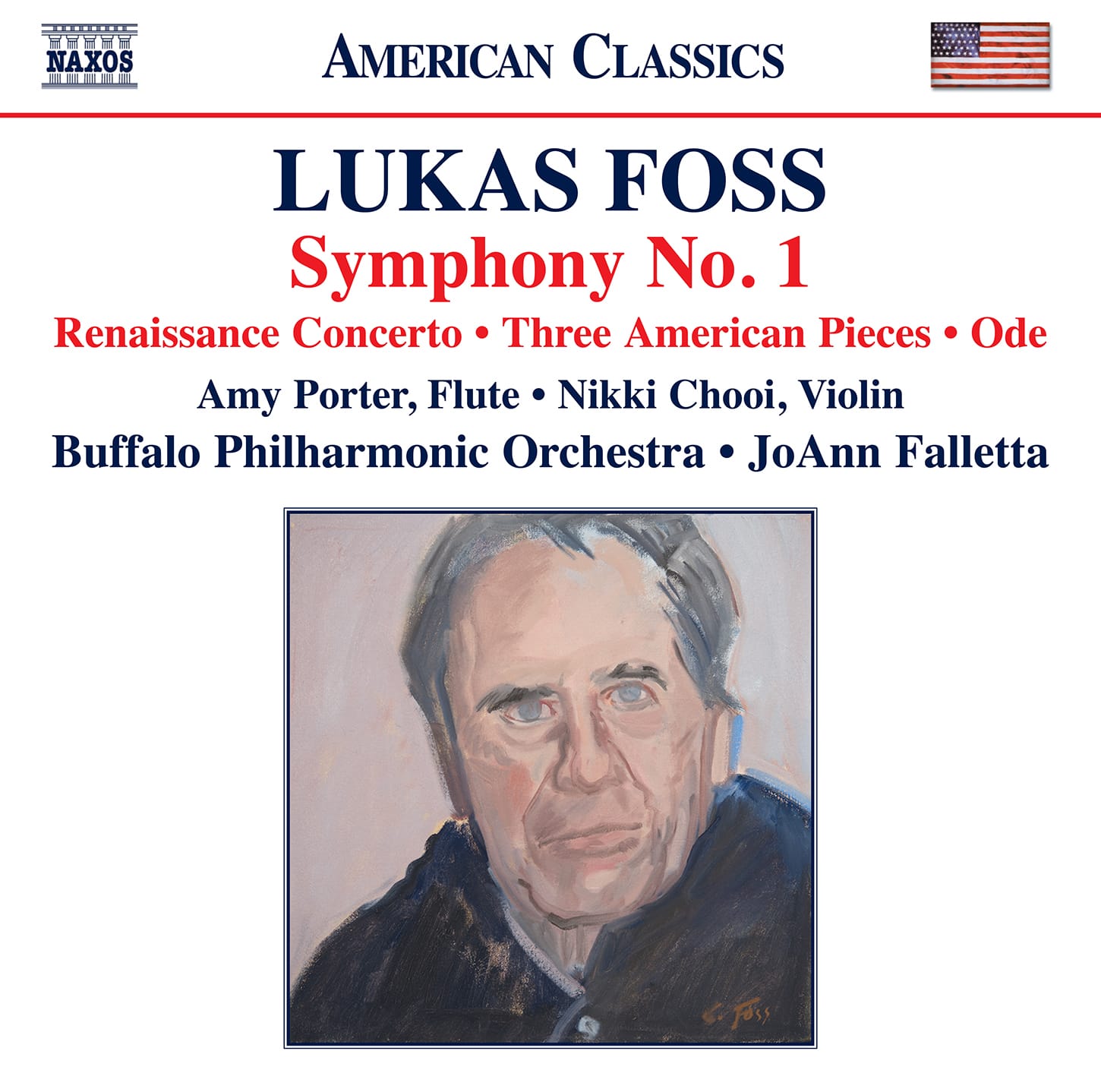Lukas Foss: Naxos celebrates
Superb Foss from Buffalo

German-American composer Lukas Foss transformed the Buffalo Philharmonic into an adventurous and world-renowned orchestra during his tenure as music director, and he was a mentor to the orchestra’s current music director, JoAnn Falletta, at the start of her career. This album celebrates the 100th anniversary of Foss’s birth with four works, including the lyrical Symphony No. 1 and the Renaissance Concerto.
An ominous tread opens Ode of 1944, heard here in its 1958 revision. Composed at the Macdowell Colony (Peterborough, not the UK one - New Hampshire), the piece is actually an In Memoriam;the original tile was Ode to Those Who Will Not Return and the piece commemorates those Americans who died in World War II. Playing with major/mino ambiguity, the wok is tightly conceived - it feels like each note's place is sharply etched into the work's fabric. The original version was premiered by the New York Philharmonic under George Szell in 1945, but he overhauled th score fo Eugene Ormandy and the Philadelphia Orchestra in 1985. At the head of the revision, Foss quoted John Donne:
Any man’s Death diminishes me because I am involved in Mankinde and therefore never send to know for whom the bell tolls: It tolls for thee.
The work includes ferocious bursts of colour; repeated rhythmic gestures, keening trombones on vacation from the Rite of Spring. A consonant arrival is quashed - this is powerful stuff.The first movement includes a reference to The Carman's Whistle, a one that found its way into teh Renaissance repertoire, perhaps most famously via William Byrd. So here's the “Intrada,” with all of its virtuoso flourishes, followed by Julian Bream:
Foss' working of the tune into his musical fabric is masterly, it has to be said. Amy Porter is a fine flautist possessed of remarkable power (it sounds like the upper dynamics emanate from her rather than microphone placement!).
The second movement is based on a piece from Rameau's Suite en sol (Suite in G) called "L'enharmonque". Here's the original with a scrolling score (played by Christophe Rousset):
... and here's Foss' take. You can hear in the original Rameau that tte harmonic progressions are, shall we say, exploratory (hence the enharmonic workings) - Foss revels in that, exploding and expanding as he sees fit while resining the gracious core of the original:
The slow movements “Recitative (after Monteverdi)” is derived from Orfeo's lament. It is beautiful, and beautifully performed here teh Buffalo stings superbly controlled:
The final “Jouissance” is based on a round by David Melviil, Musing. The soloist is asked to perform a variety of techniques, including key clicks, flutter-tonguing, breath tones)
True Americana arrives with the Three American Pieces, heard in their version for violin and orchestra (with Nikki Chooi as soloist). Written in 1944/45 for violin and piano, they were orchestrated in 1989. the composer himself called it 'Coplandesque,' something readily in evidence in the opening “Early Song” (some temendous control of high harmonics here by Chooi):
Although marked Lento initially, the second movement “Dedication” has a scampering, rhythmically discombobulating section that is most remarkable, and which certainly colours the return fo the opening long lines:
The finale is a post-Copland hoedown, more dissonant, spikier and full of virtuoso playing from both Choi and Falletta's orchestra:
Another McDowell Colony offshoot, the First Symphony (1944); it was premiered by Friz Reiner and the Pittsburgh Symphony. Foss was only 22 at the time of composition, and this is a remarkable achievement. The musical material is tightly organised, which gives Foss space to explore. there is a particularly effective moment of trumpet imitation. While the first movement is only just under seven minutes, there is a feeling of import to the music, of something larger going ...
A sweet horn solo opens the Adagio. Luminous strings halo wind melodies that seem to circle around chosen riches; Later, double-basses glower, taking these circling shape to subterranean depths. This is a magnificent, heartfelt achievement for Foss, and the Buffalo Philharmonic respond with complete concentration.
The bubbling Scherzo simply has to boil over into bright fortissimos, and so it is. Fascinating that it is a cor anglais that offers, in the first instance, contrast (there are two Trios):
To succeed the finale needs a virtuoso orchestra, and it certainly receives that here. There is an internal energy that powers through this music; Foss' imagination just overflows.
There is a complete cycle of Foss Symphonies on BMOP, but with couplings like these one hopes Naxos, too, will bring a cycle into being.
The disc is available on Amazon here. The BMOP cycle, conducted by Gil Rose, is available here.


